Simultaneous Analysis of Phenoxyethanol and Parabens
Introduction
Parabens are a class of widely used preservatives in cosmetic and pharmaceutical products, primarily due to their bactericidal and fungicidal properties. Parabens are a series of parahydroxybenzoates which are currently under scrutiny due to the possibility that long-term use of products containing parabens can cause hormone disruption and fertility issues, althoughthis has not been confirmed[1]. Methyl phydroxybenzoate, ethyl p-hydroxybenzoate, propylp-hydroxybenzoate and butyl p-hydroxybenzoate are the most common used parabens in the cosmetic and pharmaceutical industry.
Phenoxyethanol is an additional component used as a germicide and antiseptic ingredient in cosmetics. Naturally occurring in plant material such as green tea, phenoxyethanol is often used in tandem with parabens to reduce the number of parabens used during the manufacturing of such products.Monitoring paraben and phenoxyethanol concentrations are a vital part of any cosmetic of pharmaceutical manufacturer.
SCION Instruments developed a method for the simultaneous analysis of parabens and phenoxyethanol by HPLC-Diode Array Detection (DAD). Utilising the flexibility of the DAD, it was possible to extract the optimal wavelength for each target compound. Confirmation of peak identity is further certified through the comparison of the absorbance spectrum of both analytical standard and sample analysed.
Experimental
A SCION 6000 HPLC with DAD was used with a C18 reverse phase column for the identification of six parabens and phenoxyethanol. Samples included commercially available hand lotion and face cream. Samples were diluted in ethanol before being filtered and analysed. Table 1 details the analytical conditions of the HPLC-DAD system.
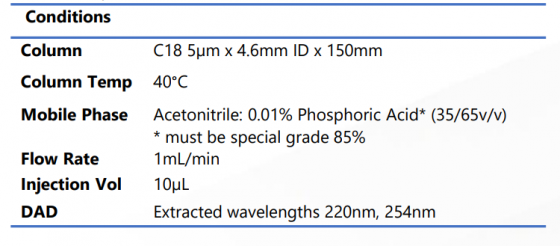
Table 1. Analytical conditions of the HPLC-DAD
Calibration curves were generated for all parabens plus phenoxyethanol at a concentration range of 0.1-50mg/L.
Results
Figure 1 shows the calibration curve of ethyl phydroxybenzoate and is representative of all target compounds in this analysis.
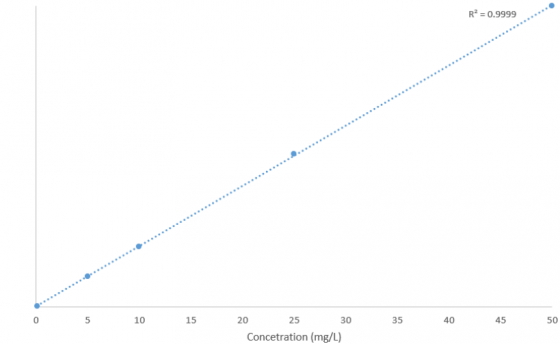
Figure 1. Calibration curve of ethyl p-hydroxybenzoate (0.1mg/L to 50mg/L)
All parabens and phenoxyethanol had excellent linearity over a range of 0.1mg/L to 50mg/L with R 2 values of no less than 0.9999. Table 2 details the target compounds, associated peak number (on the chromatogram) and extracted wavelength used for identification whilst Figure 2 shows the two chromatograms obtained when a 10mg/L standard was analysed, over both wavelengths.
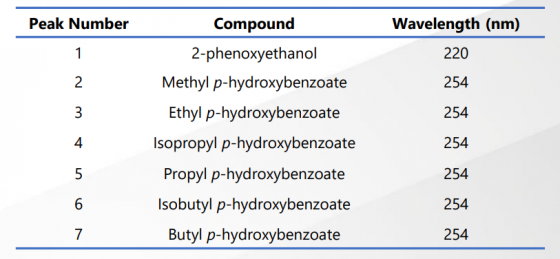
Table 2. Peak number, compound identifier and extracted wavelength (nm)
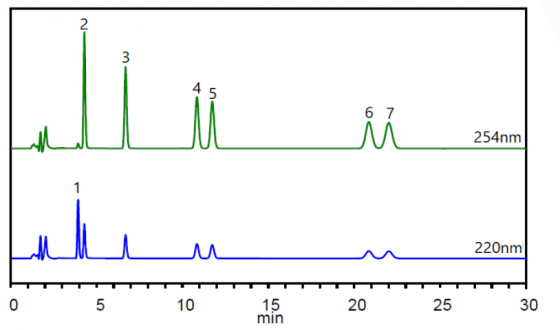
Figure 2. Standard chromatogram over two wavelengths 10mg/L)
As shown in Figure 2, all target compounds are detected over both wavelengths, although response and peak shape varies. By utilising the dual wavelengths, chromatography and selectivity increases as a result of the optimum wavelength for the parabens and phenoxyethanol being selected. Along with retention time comparison to standards, absorbance spectra comparisons were also made in CompassCDS, which provided an additional level of confirmation for peak identification. Figures 3-8 show the chromatogram of the hand lotion and face cream samples along with the comparison of absorbance spectra for a selection of identified compounds.
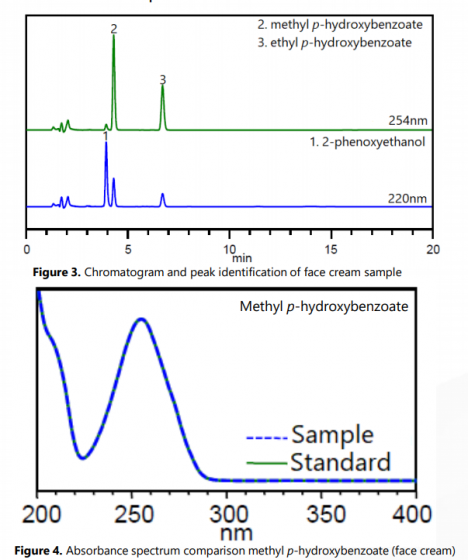
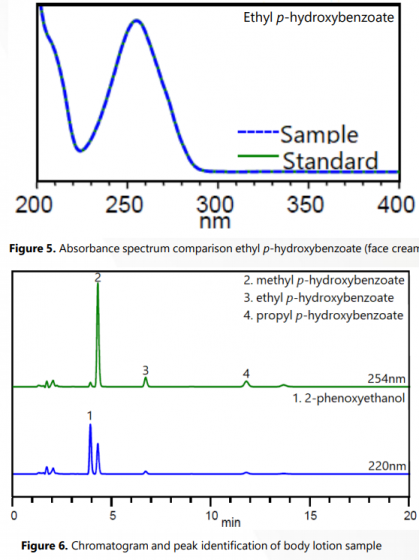
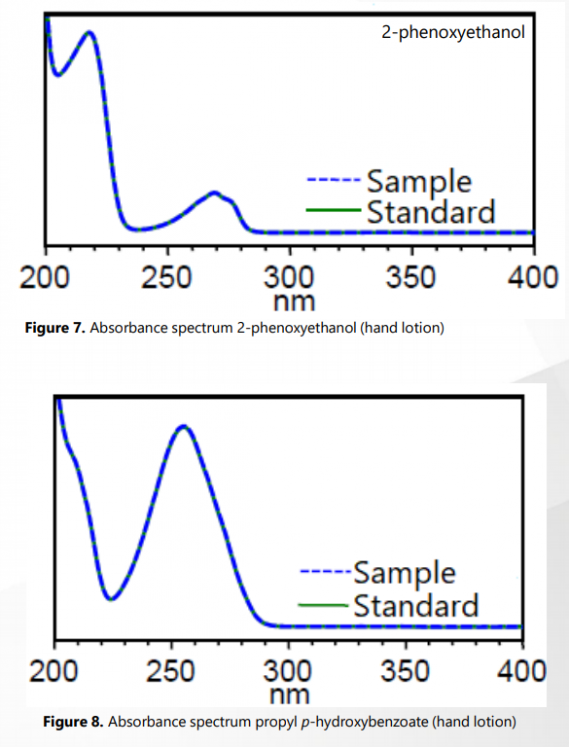
As per the analytical standards, utilising the two separate wavelengths gave better detection of the individual components, compared to using a single wavelength. Additionally, the comparison spectra confirms that the identified target compounds have the exact same absorbance pattern as the corresponding standard for that compound, adding an extra level of confidence in the results.
The hand cream contained more parabens than that of the body lotion. This is typical in cosmetics due to the storage conditions of hand cream; it is more likely to be moved from place to place requiring a higher preservation level than a body lotion or other cosmetics. Both samples contained 2- phenoxyethanol, the common germicide ingredient in cosmetics.
Conclusion
SCION Instruments developed a method for the identification of six parabens and 2- phenoxyethanol by HPLC-DAD. By utilising the extracted wavelength mechanism of the DAD, it is possible to use the optimal absorption wavelengths for each individual compound, eliminating the need for individual methods. Excellent linearity was observed for all target compounds with additional confidence in peak identification through absorbance spectrum comparison in CompassCDS.
Download Application Note
Download the complete Application Note: Simultaneous Analysis of Phenoxyethanol and Parabens
SCION 6000 HPLC-DAD
A SCION 6000 HPLC-DAD was used to conduct this research. Providing excellent solutions for the simultaneous detection of six synthetic food dyes. Find out more about the SCION LC 6000.
If you would like to get in touch with a member of our team, please don’t hesitate to contact us. Or to stay up to date with future research and articles from SCION Instruments, sign up to our news letter via the button below or follow us on LinkedIn, Facebook and Twitter.
